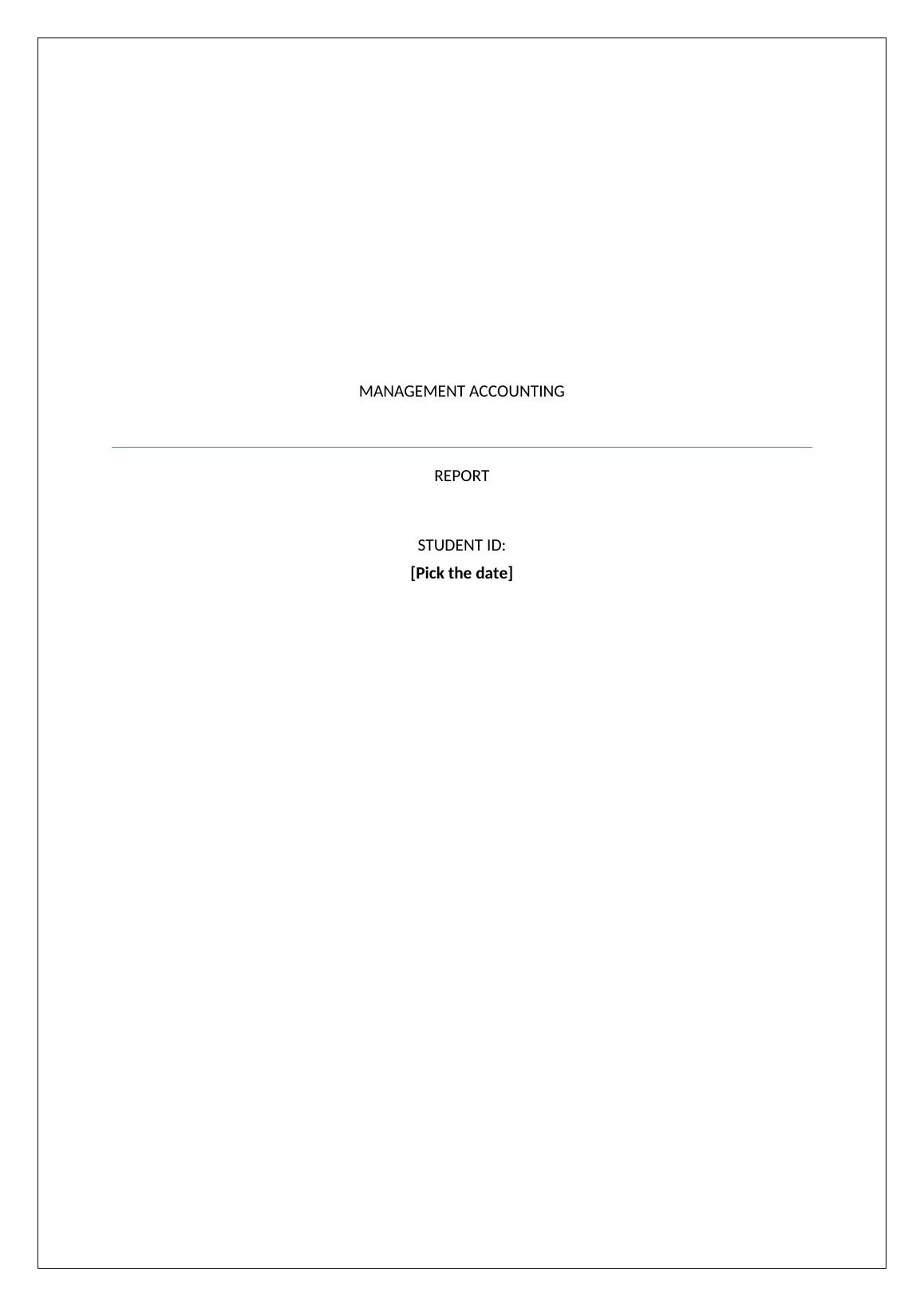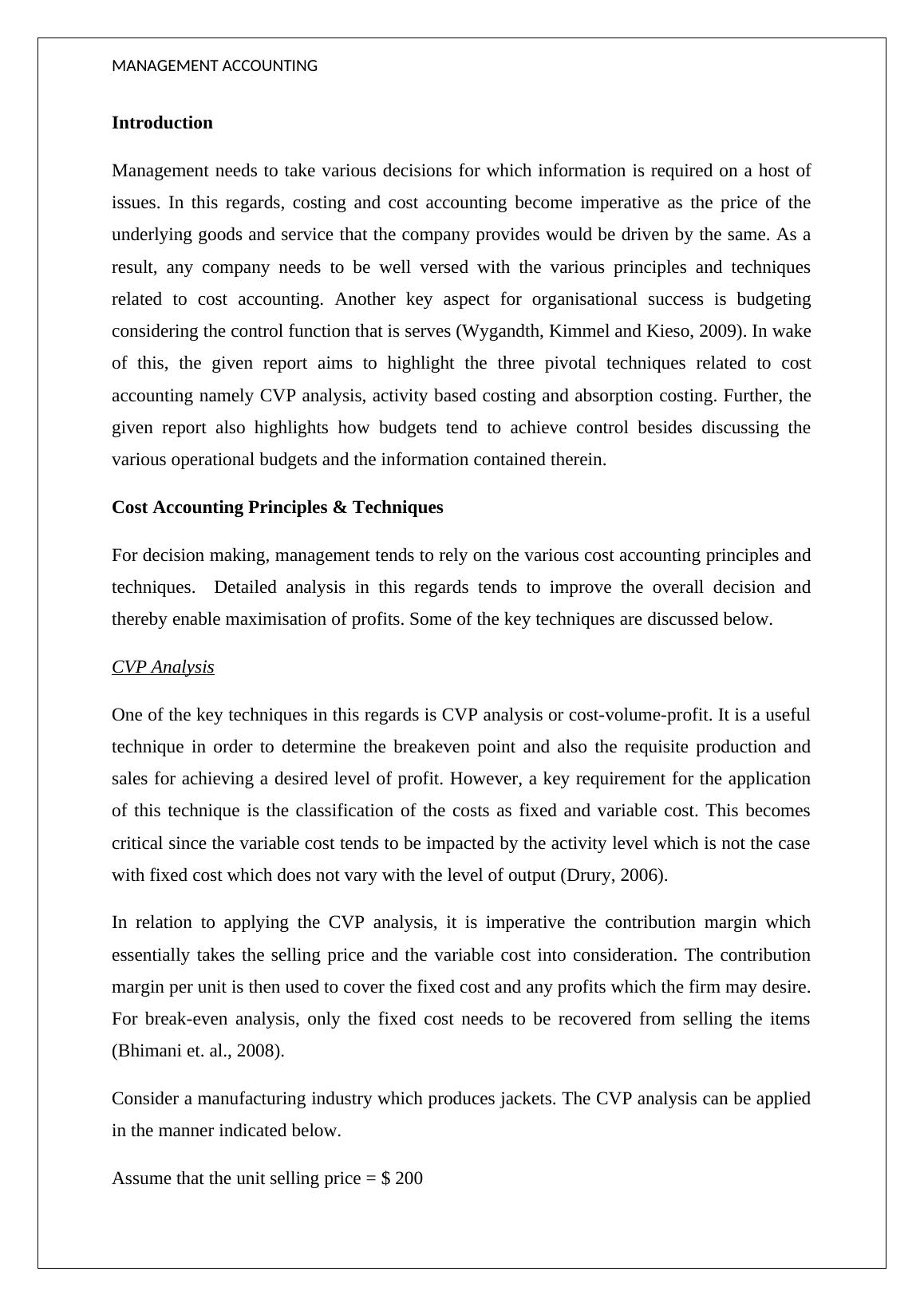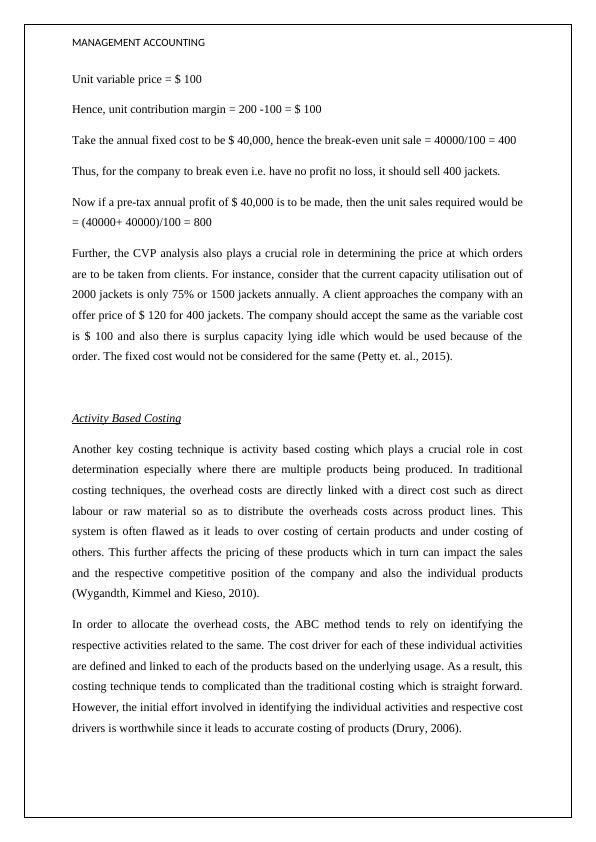Report on Cost Accounting Techniques
Added on 2020-04-13
8 Pages2568 Words33 Views
MANAGEMENTACCOUNTINGREPORTSTUDENT ID:[Pick the date]

MANAGEMENT ACCOUNTINGIntroductionManagement needs to take various decisions for which information is required on a host ofissues. In this regards, costing and cost accounting become imperative as the price of theunderlying goods and service that the company provides would be driven by the same. As aresult, any company needs to be well versed with the various principles and techniquesrelated to cost accounting. Another key aspect for organisational success is budgetingconsidering the control function that is serves (Wygandth, Kimmel and Kieso, 2009). In wakeof this, the given report aims to highlight the three pivotal techniques related to costaccounting namely CVP analysis, activity based costing and absorption costing. Further, thegiven report also highlights how budgets tend to achieve control besides discussing thevarious operational budgets and the information contained therein.Cost Accounting Principles & TechniquesFor decision making, management tends to rely on the various cost accounting principles andtechniques. Detailed analysis in this regards tends to improve the overall decision andthereby enable maximisation of profits. Some of the key techniques are discussed below.CVP AnalysisOne of the key techniques in this regards is CVP analysis or cost-volume-profit. It is a usefultechnique in order to determine the breakeven point and also the requisite production andsales for achieving a desired level of profit. However, a key requirement for the applicationof this technique is the classification of the costs as fixed and variable cost. This becomescritical since the variable cost tends to be impacted by the activity level which is not the casewith fixed cost which does not vary with the level of output (Drury, 2006).In relation to applying the CVP analysis, it is imperative the contribution margin whichessentially takes the selling price and the variable cost into consideration. The contributionmargin per unit is then used to cover the fixed cost and any profits which the firm may desire.For break-even analysis, only the fixed cost needs to be recovered from selling the items(Bhimani et. al., 2008).Consider a manufacturing industry which produces jackets. The CVP analysis can be appliedin the manner indicated below.Assume that the unit selling price = $ 200

MANAGEMENT ACCOUNTINGUnit variable price = $ 100Hence, unit contribution margin = 200 -100 = $ 100Take the annual fixed cost to be $ 40,000, hence the break-even unit sale = 40000/100 = 400Thus, for the company to break even i.e. have no profit no loss, it should sell 400 jackets.Now if a pre-tax annual profit of $ 40,000 is to be made, then the unit sales required would be= (40000+ 40000)/100 = 800Further, the CVP analysis also plays a crucial role in determining the price at which ordersare to be taken from clients. For instance, consider that the current capacity utilisation out of2000 jackets is only 75% or 1500 jackets annually. A client approaches the company with anoffer price of $ 120 for 400 jackets. The company should accept the same as the variable costis $ 100 and also there is surplus capacity lying idle which would be used because of theorder. The fixed cost would not be considered for the same (Petty et. al., 2015).Activity Based CostingAnother key costing technique is activity based costing which plays a crucial role in costdetermination especially where there are multiple products being produced. In traditionalcosting techniques, the overhead costs are directly linked with a direct cost such as directlabour or raw material so as to distribute the overheads costs across product lines. Thissystem is often flawed as it leads to over costing of certain products and under costing ofothers. This further affects the pricing of these products which in turn can impact the salesand the respective competitive position of the company and also the individual products(Wygandth, Kimmel and Kieso, 2010).In order to allocate the overhead costs, the ABC method tends to rely on identifying therespective activities related to the same. The cost driver for each of these individual activitiesare defined and linked to each of the products based on the underlying usage. As a result, thiscosting technique tends to complicated than the traditional costing which is straight forward.However, the initial effort involved in identifying the individual activities and respective costdrivers is worthwhile since it leads to accurate costing of products (Drury, 2006).

End of preview
Want to access all the pages? Upload your documents or become a member.
Related Documents
Managing Financial Resourceslg...
|16
|901
|81
Understanding Management Accountinglg...
|19
|5117
|61
Concepts of CVP analysis and Its Importance : Reportlg...
|13
|4326
|233
Assignment on Cost-Volume-Profit Analysis (CVP)lg...
|5
|1141
|213
Cost Accounting: Impact of Variable and Fixed Costs on Forecastlg...
|6
|1271
|329
Accounting for Management Decisionslg...
|10
|2481
|306
